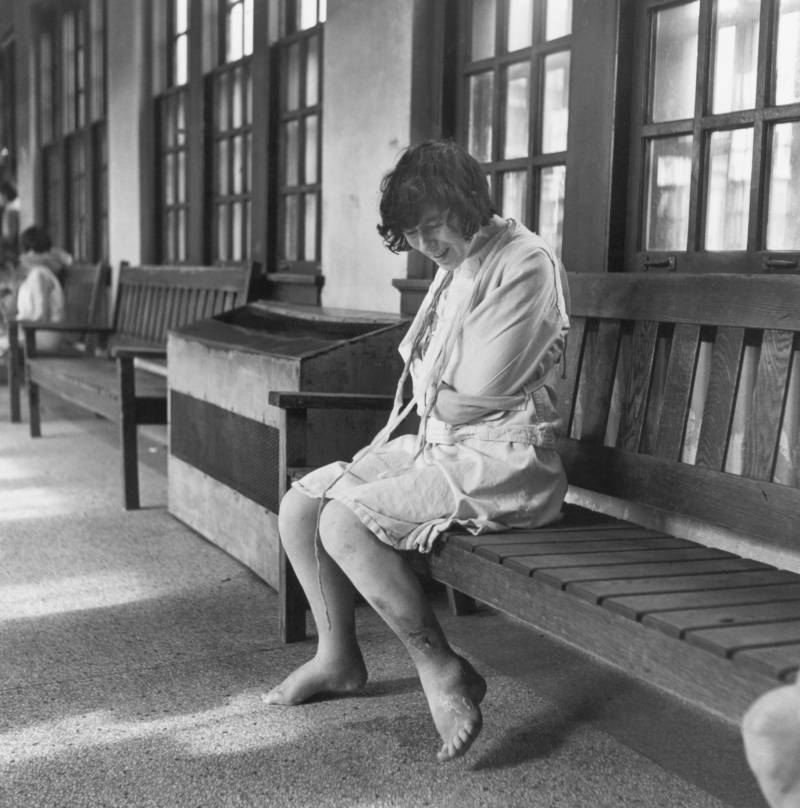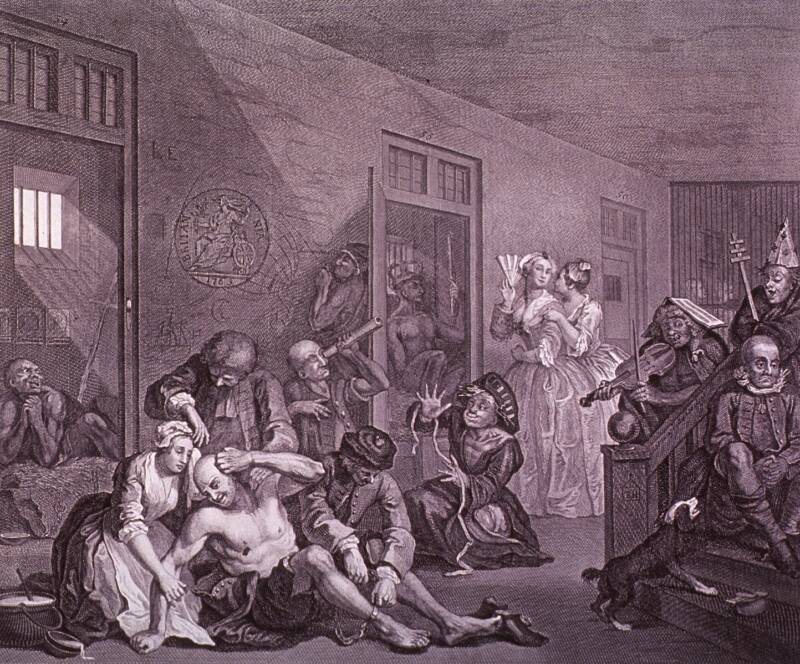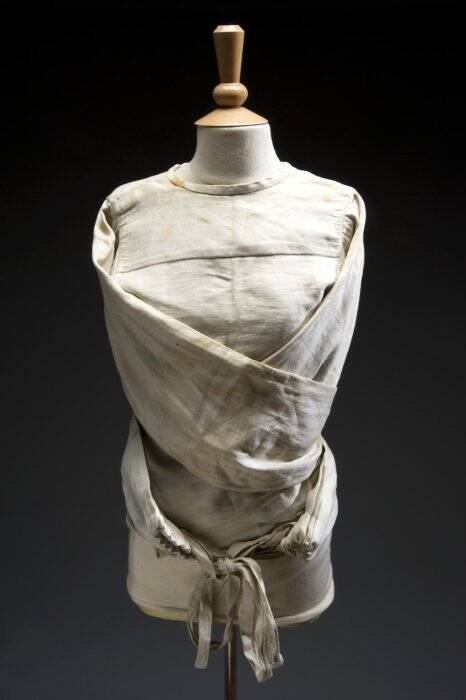From children being chained up to women being lobotomized, the conditions in these insane asylums were truly harrowing.
Like this gallery?Share it :
" The degree of civilization in a society , " depart Russian novelist Fyodor Dostoyevsky ’s immortal set phrase , " can be judged by enrol its prison . " But perhaps that phrasal idiom also applies to another class of institutions mean to house those deemed bad for society : mental mental home .
start out in the eighteenth and 19th centuries , genial asylums come forth in Europe and the United States as places where the mentally ill could receive care . But " precaution " is perhaps not the right word , as early harebrained mental home often used chains , straitjackets , and closing off to keep their patient in check .

A patient sits inside Ohio’s Cleveland State Mental Hospital in 1946.
During the reform - disposed 19th century , these practices finally began to change as attitudes about genial wellness shift . Well - to - do reformer gave money to build up palatial asylums and patients were treated more humanely there . But this period was brief . As genial asylums became overcrowded , patient role were progressively mistreat by staff members .
By the 20th C , the mentally inauspicious were often sent to insane asylums simply to keep them away from the general universe . There , Modern technique like electroshock therapy and lobotomies became the norm .
All in all , the history of mental asylum is a torturing one . Above , calculate through some of the most scandalous photo of asylums and their patients through the ages , and , below , see how these institutions changed over clip .

The Rise Of Mental Asylums
Public DomainAn etching of a cellblock at Bethlem Royal Hospital by William Hogarth . 1735 .
The first British mental mental institution — Bethlem Royal Hospital — spread out in 1247 . Though palatial and luxurious , Bethlem was a dingy position for patients . multitude entered the institution for different reason , from " acute black bile " to homicide . There , they were often subjected to isolation or " rotating therapy , " in which they were spun in a chair that was cling from the ceiling .
Bethlem was an outlier , however . Most people who were mentally ill at the time were wish for by their family . If they did n’t have a house , theScience Museum in the U.K.reports that they would often be forced into destitution .

By the start of the eighteenth one C , more mental asylums had emerged . The rich could send their mentally ill relatives to secret institutions , but the poor had to swear on in public - fund mental institution . These asylum often relied on restraint to " treat " their patients , which fostered a fierce atmospheric state .
" In pauper asylum we see chain and strait - waistcoats , three or four half - naked creatures throw into a chamber filled with straw , to worsen each other with their clamour and attempts at ferocity ; or else gibbering in idleness or moping in purdah , " social reformer Harriet Martineau said after visiting mental asylum , according to the Science Museum in the U.K.
At the prison term , Atlas Obscuranotes that there was little difference between " squalid " public insane asylums , poorhouses , and jails .

But in the nineteenth century , this start up to change .
The Short-Lived Era Of Asylum Reform
Public DomainAn illustration of Hanwell Mental Asylum in London in 1843 . This institution used a kinder " moral treatment " on its patients , but overcrowding and understaffing soon created desperate conditions .
AsNew Scientistreports , the 19th century saw a concerted effort to amend the conditions in genial sanctuary . Palatial hospitals were built across the United States and Europe , where patient were given " moral treatment . " This stand for a calm environment , fresh air , honorable food , and jobs .
" In the bakehouse … are a company of patients , kneading their moolah ; and in the wash - house and laundry , many more , equally busy , who would be tearing their apparel to pieces if there was not the mangle to be sprain , " Martineau publish approvingly after visiting the Hanwell Mental Asylum in 1834 .

That aver , asylum in the 19th C were hardly paradise . And they eventually served an insidious function . As theWashington Postnotes , horrific theories about eugenics gave asylums allowance to keep the " feebleminded , " " mental defectives , " and " lunatics " out from the cosmopolitan universe . And most patient role never left their asylum .
Though affected role started spend their biography at genial asylums , more keep arriving . Overpopulated , understaffed , and underfunded , these insane sanctuary shortly became " adage for squalor and neglectfulness , and often run by ill-chosen , tainted or sadistic administrative official , " per neurologist Oliver Sacks .
An examiner who visited Hanwell Mental Asylum in 1893 , almost 60 geezerhood after Martineau penned her glowing review , found the institution painfully lacking . He described " gloomy corridors and Ward " and notice , " It would be astonishing to line up that any therapeutic are ever made there . "

The Decline Of Mental Asylums
Science Museum Group CollectionA 20th - century straitjacket used to restrain patient at Frenchay Hospital in Bristol .
By the 20th hundred , genial mental home had turned away from " moral discussion " and started to treat their patients with depressant , electroshock therapy , and lobotomies , among other new methods .
New drugs help mental asylums — which were teetering under ballooning toll — as the medicine helped patients live more normal and peaceable lives . But people who were subjected to terrific treatments like fundamental electroconvulsive therapy therapy and prefrontal lobotomy were severely traumatized , as depict in several 20th - century books likeOne Flew Over The Cuckoo ’s Nestby Ken Kesey ( 1962 ) andThe Bell Jarby Sylvia Plath ( 1963 ) .

In the 1970s and 1980s , most genial asylums begin to shut down . There was no longer any far-flung financial backup for them , and outpatient solutions like medication and modernise mental wellness care had remove some need for longstanding psychiatric hospital . Many patient role , however , were just released into their communities without much of a safety net .
This has entrust a swath of desolate insane asylums across the U.S. They stand as eerie reminder of a time when people were bemuse in padded rooms , constrain to their bed , or subjected to electroshock therapy .
Let the agonizing photos above return you to a relatively benighted era in psychiatric care — one that was n’t really all that long ago .

Next , see 37 haunting portraits oflife inside Victorian mental asylums . Or discover stories from some of the mostinfamous insane asylumsin history .










Public DomainAn etching of a ward at Bethlem Royal Hospital by William Hogarth. 1735.

Public DomainAn illustration of Hanwell Mental Asylum in London in 1843. This institution used a kinder “moral treatment” on its patients, but overcrowding and understaffing soon created dire conditions.

Science Museum Group CollectionA 20th-century straitjacket used to restrain patients at Frenchay Hospital in Bristol.

